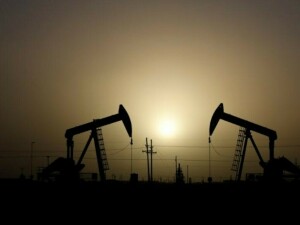The global economy has absorbed repeated shocks over the past few years from a stock market crash, two big wars, a doubling of oil prices and serial natural disasters. But all that would pale in comparison to a worst-case influenza pandemic.
Despite growing anxiety about such an outbreak, heightened by recent spread of the H5N1 virus or "Avian flu," economists still view a world-wide flu crisis that kills tens of millions as a "low probability" event.
That is mainly because it is impossible to gauge whether H5N1, which originates in birds but has killed more than 60 people in Asia and spread as far as Europe, will mutate into the feared human-to-human strain and trigger a pandemic.
But many experts say even if bird flu doesn't transform into the most-feared killer bug, some form of influenza pandemic is still a sure bet within the next 10 years to 20 years - mainly because one is long overdue.
The famous 1918 outbreak, which killed 50 million to 100 million people globally, was followed by less deadly pandemics in 1957, when some 2 million died, and in 1968, when "swine flu" killed about 1 million.
Estimating how many another pandemic could kill is fraught with difficulty. Calculating an overall economic impact is even trickier, given the potential for panic and indirect costs from a hiatus in travel and trade.
"Substantial loss of life would obviously lead to a decline in economic output but we believe fear of infection, leading to drastically altered behaviour, would result in the greatest economic damage," said Rob Carnell, economist at ING bank.
"We cannot begin to quantify the potential damage in terms of gross domestic product, but a realistic scenario might be GDP declines in the tens of percent," said Carnell. "In the case of slower growing economies such as Europe or Japan, a decade's economic growth could be wiped out."
For a world economy generating about $41 trillion worth of output each year - and currently growing at about 4 percent per annum - the dollar cost could be astronomical.
PANDEMIC MODELING Official US economic forecasts relating to such a pandemic are deliberately kept realistic enough to encourage a workable government response, experts say.
But even these direct cost estimates - which look at income and production lost from loss of life as well as the cost of vaccines and health care in the United States - run at least as high as August's devastating hurricane Katrina.
A 1999 paper from the Centers for Disease Control and Prevention in Atlanta estimated an economic impact of between $71.3 billion and $166.5 billion from US deaths of up to 207,000 and hospitalisation of up to 734,000, "excluding disruptions to commerce and society."
"In considering what planning there would have to be for the next pandemic, we thought - and still do - that the 1968 scenario is adequate," Martin Meltzer, co-author of the report and a senior health economist at the CDC, told Reuters.
He said the world may well be spared a mutation of H521 into the worst form of human-to-human strain but was unlikely to avoid some form of flu pandemic in the years ahead.
"We're certain that somewhere along the future we're likely to see another influenza pandemic. We've had three in the 20th century - what would make us think that all of sudden we'll have no more in the 21st?" Meltzer said.
In an effort to grasp the scale of damage the economy could suffer, some economists look to the fallout from the outbreak of Severe Acute Respiratory Syndrome, or Sars, in 2003.
Although Sars was relatively minor compared to projections of an influenza pandemic, it infected about 8,000 people in 25 countries, killing 775 people, including 44 in Canada.
Carnell at ING said disruptions to travel, trade and in the workplace were significant, cutting about 2.6 percentage points off Hong Kong's GDP. Canada reckons Ontario, its most populous province, lost about 28,000 tourism-related jobs at a cost of C$2 billion to the economy.
The economic toll of the six-month crisis on the Asia-Pacific region was about $40 billion.
Given that foretaste, a 1918-type outbreak could bring economic catastrophe.
"Recent clinical, epidemiological and laboratory evidence suggests that the impact of a pandemic caused by the current H5N1 strain would be similar to that of the 1918-19 pandemic," Michael Osterholm, director of the Center for Infectious Disease Research and Policy, said in a recent paper.
Disruption to trade and travel from efforts to contain the virus would be incalculable, he said, adding global, regional and national economies would come to "an abrupt halt."
One big fear about the re-emergence of a 1918-type flu strain is that it killed millions of people in the most productive age groups - the 20- to 40-year-old bracket - as opposed to just preying on the very old and very young.
"The resources required to prepare adequately will be extensive," warned Osterholm. "But they must be considered in the light of the cost of failing to invest: a global economy that remains in a shambles for several years."
BR100
11,814
Increased By
90.4 (0.77%)
BR30
36,234
Increased By
874.6 (2.47%)
KSE100
113,247
Increased By
609 (0.54%)
KSE30
35,712
Increased By
253.6 (0.72%)
























Comments
Comments are closed.